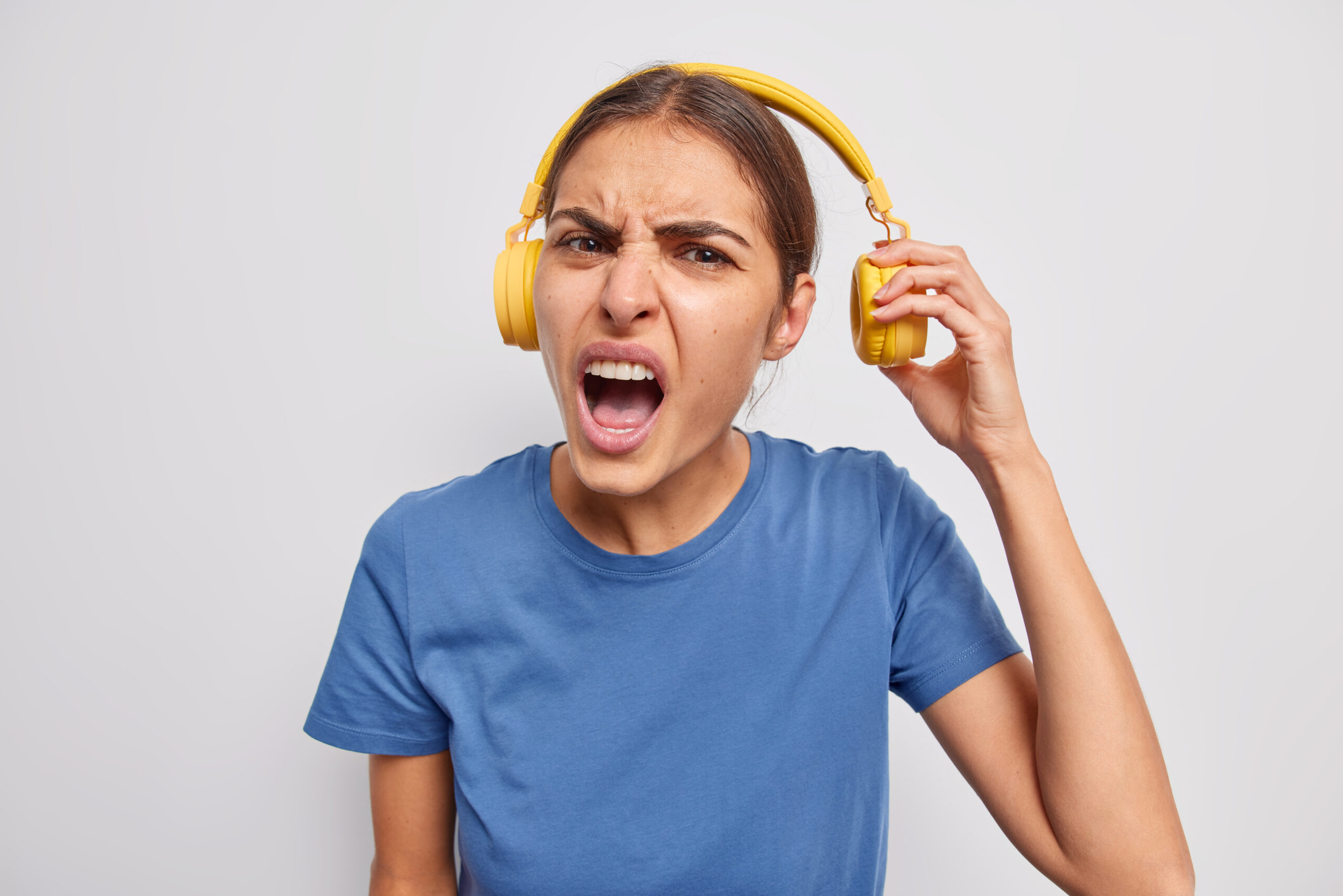Let’s first discuss what hearing loss is and how it happens.
WHAT IS HEARING LOSS?
Hearing loss is a sudden or slow decrease in how well you hear.
It can range from mild to severe.
Permanent hearing loss can also occur with AGING.
It also can happen when you are exposed long-term to loud noise, for example, listening to loud music, or being around other loud machines.
Hearing loss can affect your work and home life. It can make you feel lonely or depressed.
You may feel that you have lost your independence, but hearing aids and other devices can help you hear better and feel connected to others.
Types of hearing loss:
- Sensorineural hearing loss.
- Conductive hearing loss.
- Mixed hearing loss
Sensorineural hearing loss:
Sensorineural hearing loss is caused by damage either to the —
– Hair cells in the cochlea or
– The auditory nerve.
Sensorineural hearing loss happens mostly due to –
a) Aging,
b) Exposure to loud noises,
c) Head trauma,
d) Infections such as meningitis, mumps, measles, etc
e) Exposure to Ototoxic drugs
Conductive hearing loss:
Conductive hearing loss is caused when there is a problem in delivering sound energy to the
the cochlea, which is the hearing part in the inner ear.
There are some common reasons that cause conductive hearing loss, which include –
a) Blockage of the ear canal with ear wax, foreign body, mass etc.
b) A hole in the ear drum (Tympanic membrane perforation)
c) Problems with three small bones of the ear (which are known as Ossicles; Malleus, Incus, and Stapes), or
d) Fluid in the middle ear (Serous Otitis Media)
Most cases of conductive hearing loss can be improved. The symptoms of conduction hearing loss vary in different patients, which depend on the cause and severity.
Mixed Hearing Loss
When there are elements of both conductive and sensorineural hearing loss, such hearing loss is called Mixed type hearing loss.
Do earphones or headphones can cause hearing loss?
Yes! Absolutely, earphones and headphones both can cause hearing loss.
MP3 players today can produce sounds up to 120 decibels. At this level, hearing loss can occur if you listen continuously for a very long time.
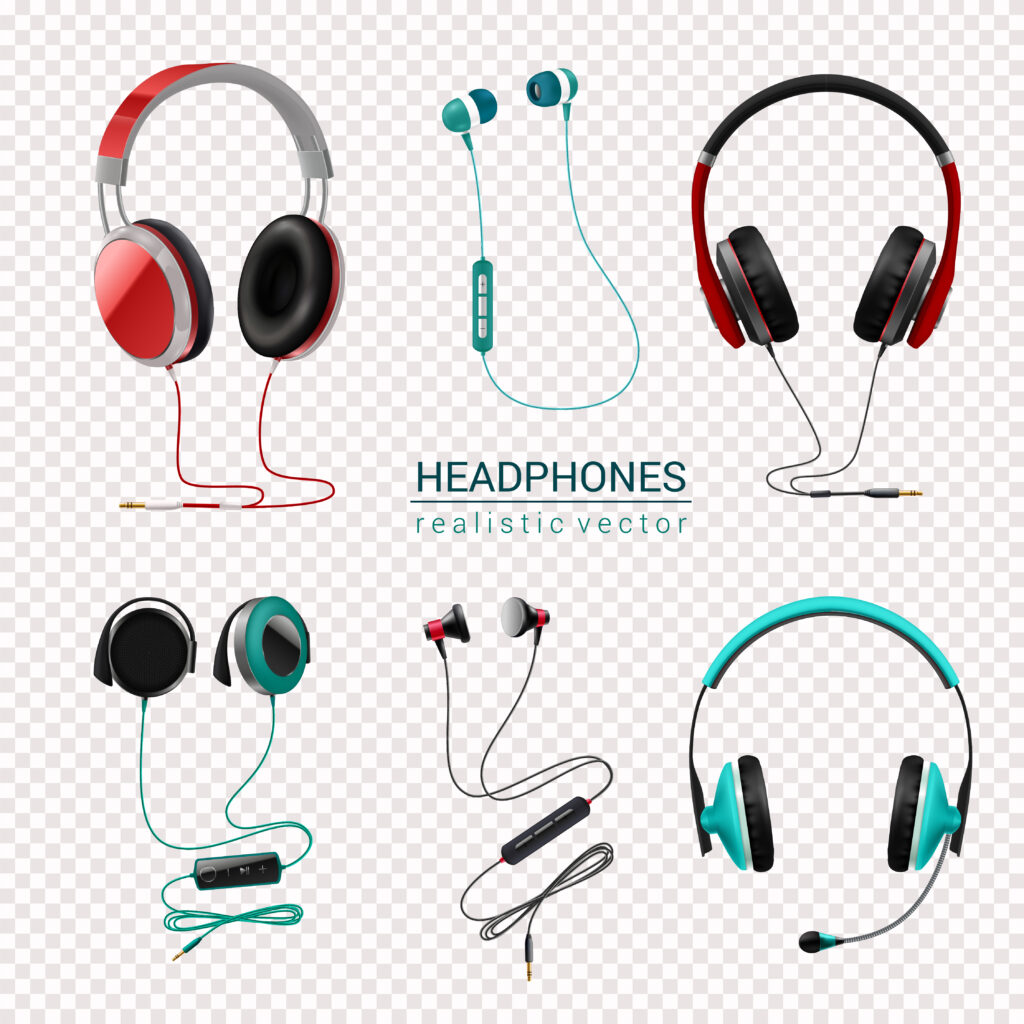
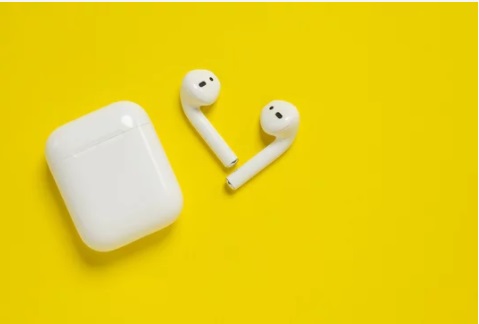
How do you know that the sound of your music player is loud?
If you can’t hear anything going around you while listening to headphones, it means that the decibel level is too high.
The hearing loss due to headphones is typically GRADUAL without obvious warning signs.
It’s very common nowadays that people listen to music with headphones and earphones.
Many studies show that if you are using headphones too often and too loud, you can damage your ability to hear.
This is a primary concern for teens and young people who listen to music very loud and very frequently and this is causing NOISE-INDUCED HEARING LOSS (NIHL).
A hearing test and a medical examination is the only way to diagnose hearing damage.
The type of hearing loss caused by over-exposure to very loud noise is IRREVERSIBLE, so prevention is good.
Hearing aids and implants can help in amplifying sounds and making it easier to hear.
HOW TO DETECT HEARING LOSS CAUSED BY HEAPHONES?
A simple audiometry test like PURE TONE AUDIOMETRY (PTA) can detect the type as well as the severity of hearing loss.
In addition to PTA, audiology tests like IMPEDANCE AUDIOMETRY or TYMPANOMETRY can also help in diagnosing diseases such as Serous Otitis Media, Otosclerosis, etc.

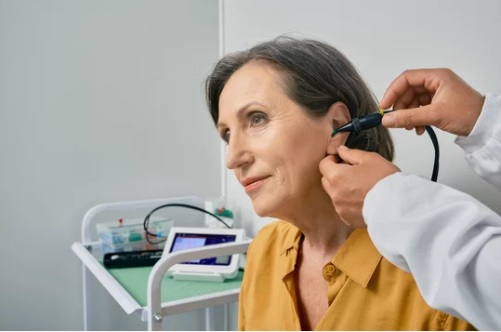
Should you stop using headphones and earphones?
No, you don’t have to stop using headphones or earphones.
Nowadays, headphones are commonly used or we can say is a basic need, so we cannot stop using the headphones.
Using the headphones carefully and for the right time, you can decrease the risk of hearing loss from headphones and earphones.
How much loud sound is harmful?
Sound is everywhere and can be measured to inform and protect us, as some sounds are not safe.
Sound is measured with a device, which is called a decibel meter. So, the loudness of sound is
measured in decibels or dB. It measures the intensity of sound.
The normal conversation is measured at 60 dB, which is moderate loudness.
Blenders and hair dryers produce sounds of 90 dB, which is very loud.
Fireworks and gunshots produce sounds of up to 140 dB, which is a painful and dangerous sound.
Over 85 dB for a long period of time can cause permanent hearing loss.
How long you should use headphones at a time?
Volume plays the main role while using headphones.
Doctors recommend the 60/60 rule for using headphones.
It means you should not cross the volume of your headphones from 60% and do not listen for more than 60 minutes.
This is the rule, which decreases the risk of hearing loss from headphones and makes it safe to use.
How often you should use headphones or earphones?
Using the headphones for a very long period of time can create problems in your ears, which is
not limited to only hearing loss, it can also cause —
- Dizziness,
- Ear infections,
- Ear pain,
- Tinnitus, etc.
So, make sure, you should give a gap after 30-40 minutes of listening to music or while using
headphones.
So, your ears can rest in between and moreover, the chances of ear infections or bacterial infections are low.
So, you can use the headphones for a long period of time by taking frequent gaps or breaks in between listening.
What are the safe listening tips?
1. Use headphones rather than using earphones or earbuds because headphones are placed over the ears and earphones or earbuds are placed inside the ears.
So, while using the headphones, there is a gap in between headphones and the eardrum, which is safer than earphones, as the earphone sits very close to the eardrum.
2. Earphones and earbuds make the sound louder of around 6 dB than headphones.
3. Headphones stop the outer noise, so you do not need to increase the volume as low volume can be clearly audible as compared to earphones or earbuds, which does not stop the outer noise.
So, the noise cancellation headphones are the best options to enjoy your listening at a low volume without any risk.
4. Try to use the best quality music only.
5. You should use an equalizer in your music app so that you can enjoy the best sound effects in low volume.
6. Use the rule of 60/60 while using headphones.
7. Do not sleep while using headphones or earphones. It can be very risky for your ears.
How can you care for yourself at home?
Avoid loud noises whenever possible. This helps keep your hearing from getting worse.
Always wear hearing protection around loud noises.
Wear a hearing aid as directed. See a professional who can help you pick a hearing aid that
fits you.
Have hearing tests as your doctor suggests.
They can show whether your hearing has changed. Your hearing aid may need to be adjusted.
Use other devices as needed –
These may include–
- Telephone amplifiers and hearing aids that can connect to a television, stereo, radio, or microphone.
- Devices that use lights or vibrations. These alert you to the doorbell, a ringing telephone,
or a baby monitor.
- TTY (text telephone). This lets you type messages back and forth on the telephone
instead of talking or listening.
- Use text messaging, social media, and email if it is hard for you to communicate by
telephone.
- Try to learn a listening technique called speechreading.
- Think about counseling if you need help to adjust to your hearing loss.
- Watch closely for changes in your health, and be sure to contact your doctor if you think your hearing is getting worse and you have new symptoms, such as dizziness or nausea.
WHAT ARE THE HEARING AIDS FOR HEARING LOSS ?
There are several hearing aids available in the market that a patient can choose from.
The various hearing aids available are —
- BTE – BEHIND THE EAR hearing aid
- mini BTE – MINI BEHIND THE EAR hearing aid
- RIC – Reciever In The Canal hearing aid
- ITE – IN THE EAR hearing aid
- ITC – IN THE CANAL hearing aid
- CIC – COMPLETELY IN THE CANAL hearing aid
- IIC – INVISIBLE IN THE CANAL hearing aid
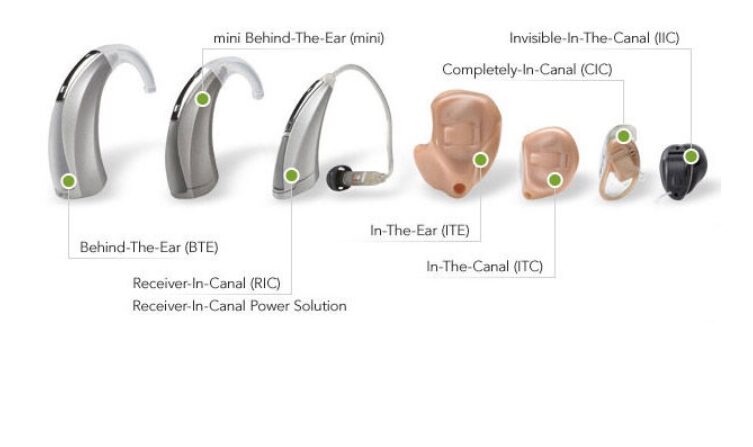
What are the surgeries for hearing loss?
Cochlear implant surgery:
A cochlear implant is a small electronic device that can help you hear. You may get one if you
have severe or total hearing loss.
The implant does the job of the damaged or absent nerve cells that in a normal ear make it possible to hear.
A small device worn outside the ear turns on the implant.
Get all of the required vaccines at least 2 weeks before cochlear implant surgery.
During this surgery, the ENT surgeon will make a cut (incision) behind the ear. Then, an
implant will be placed in the inner ear. The incision will leave a scar that will fade with time.
The implant may make a small bump under the skin behind your ear. Your hair may cover the
scar, the bump, and the device worn outside your ear.
Most people are able to go back home 1-2 days after surgery.
Your hearing will not change right after surgery. This does not happen until the
implant is turned on (activated) 3 to 6 weeks later. This gives the ear time to heal.
A cochlear implant can help understand speech and speak clearly, but it will not give normal hearing.
How well the implant works depends on many things, which include how long you have had hearing problems and how well sound signals travel to the brain through the auditory nerve.

Bone-Anchored hearing Aid (BAHA):
A bone-anchored hearing aid is a device permanently implanted in the skull that helps with
hearing loss.
The system works by picking up sound vibrations.
The ear is made up of the external ear canal, the middle ear, and the inner ear.
The middle ear is separated from the ear canal by the eardrum. The inner ear contains the cochlea, which is the main organ of hearing.
Sound enters the ear canal and strikes the eardrum. The bones of the middle ear vibrate sending the vibration to the inner ear. The cochlea changes sound waves into electrical signals. The brain interprets these signals as sound.
A bone-anchored hearing aid can be helpful when there is a problem from the outside of the ear to the cochlea.
The system bypasses the middle ear. It sends sound through the skull bone right to the cochlea.
The sound is usually very clear.
Some people say they hear better with a bone-anchored hearing system than with a regular
hearing aid because nothing is molded into the ear to block sound. This system may be a choice
for people who do not benefit from a standard hearing aid.
BAHA may be helpful if –
– You were born without an ear canal. (This is called congenital aural atresia.)
– You have a chronic ear infection, and your hearing aid makes the infection worse.
– You are allergic to the material used to make standard hearing aids.
– You have a single hearing ear.
THANK YOU
MEDICAL ADVICE DISCLAIMER:
This blog including information, content, references, and opinions is for informational purposes only.
The Author does not provide any medical advice on this platform.
Viewing, accessing, or reading this blog does not establish any doctor-patient relationship.
The information provided in this blog does not replace the services and opinions of a qualified medical professional who examines you and then prescribes medicines.
And if you have any questions of medical nature, please refer to your doctor or the qualified medical personnel for evaluation and management at a clinic/hospital near you.
The content provided in this blog represents the Author’s own interpretation of research articles.
